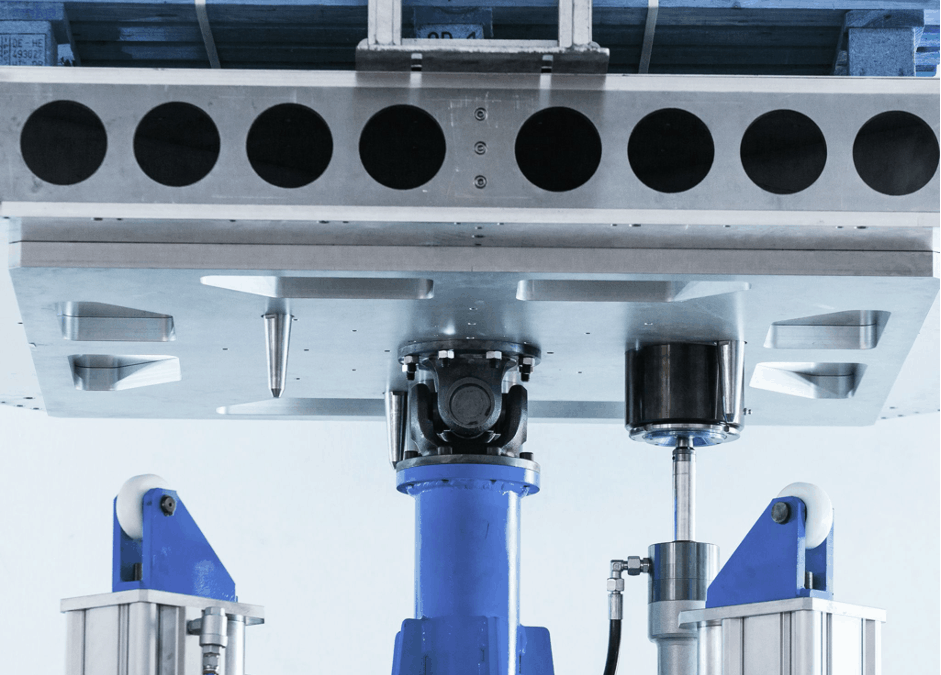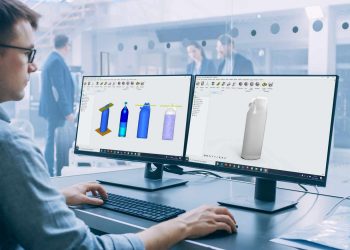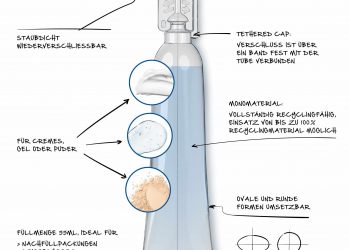Reproducing vibration environments in a laboratory setting is essential to guarantee that a product will survive real-world conditions. However, reproducing vibration environments is not simple. When compared to traditional vibration testing table options, multi-axis vibration testing is a way to bring those simulations closer to real vibration environments.
What is multi-axis vibration testing?
Multi-axis vibration testing is the name given to a complex testing method whereby a sample is shaken (or excited) along more than one axis. Multi-axis vibration testing is performed by applying a single-axis vibration to a sample along the X, Y and Z axes of the product. These tests are performed using a linear shaker and rotating the sample onto the following axis after each round.
The three-axis test reduces traditional testing times by two-thirds and replicates real-world vibration environments.
Automated multi-axis tests are performed by replicating field data or through the use of a random vibration profile based on the analysis of field data with some time compression.
Traditionally, vibration testing requires single-axis systems, using a linear vibration shaker system and testing in one direction, subsequently rotating the sample and testing it in another direction.
As such, some examples of single-axis tests include:
- Stress tests (static tests)
- Vertical vibration tests (dynamic tests)
- Suspension vibration tests in automotive. In this case, the test uses 4 vibrators, but all of them vibrate along the same axis: the vertical one.
However, research in this field has proven that real vibration environments are characterized by multi-axis motions. This is where multi-axis vibration testing comes in, to attain simulations that can replicate the real-world conditions that a product will have to face.
Multi-axis vibration testing shakes the sample along multiple axes. It is therefore a more complex test, both due to the number of elements involved, and due to the axes along which the shaking takes place. Naturally, these tests are much more effective when obtaining results that are closer to real-world conditions.
Some examples of multi-axis vibration testing include:
- Multi-axis vibration machine:
- Vertical + pitch & roll vibration machine
- Vertical and horizontal vibration machine
- Fatigue test machines in automotive, through the use of multi-axis automotive testers (for testing seats, seatbelts, suspensions and others)
- Structural testing machines that measure resistance, earthquake simulators, etc.
- Aviation test benches.
Types of multi-axis vibration testing
When applied to the transportation environment and the simulation of product + packaging systems, there are two types of multi-axis vibration testing:
> Three-axis testing
In this case, three shakers are used to vibrate a sample along the X, Y and Z axes simultaneously, using random vibrations.
This is a more realistic multi-axis vibration testing than the vibrations in single-axis systems, and it is mainly used to test components and secondary systems.
> Six Degrees of Freedom
The Six Degrees of Freedom or 6-DoF system adds the three directions of rotational motions (pitch, roll and yaw) to three axis testing (X, Y, Z).
This allows for several configurations, more closely replicating motions in real settings.
Challenges of multi-axis vibration testing
The performance of multi-axis vibration testing is a complex process where certain incidents may take place. These include:
- Shaker coupling, when one’s motion ultimately affects the others.
- An inadequate placement of accelerometers might distort the results if resonances are not minimized.
- Possible resonances, which are harder to control during a simulation that uses multiple axis systems.
In order to prevent these issues, it is essential to count with reliable vibration systems in combination with staff that has the necessary experience in the field of multi-axis vibration testing.
Benefits of multi-axis vibration testing when compared to a single-axis system
Multi-axis vibration testing is used in a wide range of sectors, including packaging, transportation, automotive, aeronautics, security, structural testing, seismic testing, etc.
Its advantages when compared to a single-axis system are twofold:
1. Reducing testing times
The main benefit of multi-axis vibration testing is that it enables companies to obtain results from several individual tests combined into a single test. In this way, it shortens the times that are necessary to test and verify products.
2. Improving result reliability
The real conditions involve multi-axis movements, which means that multi-axis vibration testing is the most accurate simulation to simulate more realistic vibration environments.
This means that a product could pass a test on a single-axis vibration testing table, but fail tests on a multiple axis one, since the latter are closer to real conditions.
The scientific literature on the subject quoted by ISTA asserts the claim that a multi-axis vibration system can better simulate real vibration environments: Batt (2010) claims that the vertical axis is not always the main contributor to the general motion of a vehicle; Rouillard (2013) proves that pitch & roll motions can be just as damaging as vertical vibrations; and Shires (2014) asserts that multi-axis vibration testing can generate responses that cannot be foreseen through the use of single-axis systems.
References:
- Batt, G., 2010, “Use of Simultaneous Three Axis Vibration in Simulating the Transport Environment”, Presented at ISTA International Transport Packaging Forum.
- Rouillard, V., 2013, “Some Observations On The Heave, Pitch, and Roll Vibration of Road Transport Vehicles”, Presented at ISTA TransPack Forum.
- Shires, D., 2014, “Methodologies For Vibration Testing Packaged-Products”, Available from International Safe Transit Association, East Lansing, MI, USA.
Safe Load Testing Technologies is a company is based on the 22 years of experience of its staff in the research and development of new methods and equipment for optimizing distribution packaging.
Safe Load Testing Technologies is a start-up of PACKA VENTURES, a technology-focused company builder that promotes the scientific research, technological advancement, the development of information society and the promotion of sustainability in the packaging, logistics, transport and mobility areas.
Furthermore, as members of ISTA, IAPRI and EUMOS, the company have completely committed ourselves to supply high quality, accurate and innovative technology in order to comply with the main tests and procedures.







